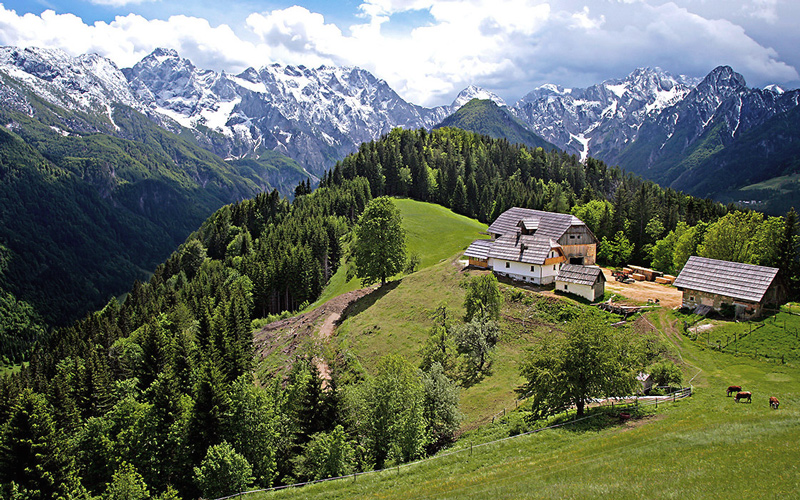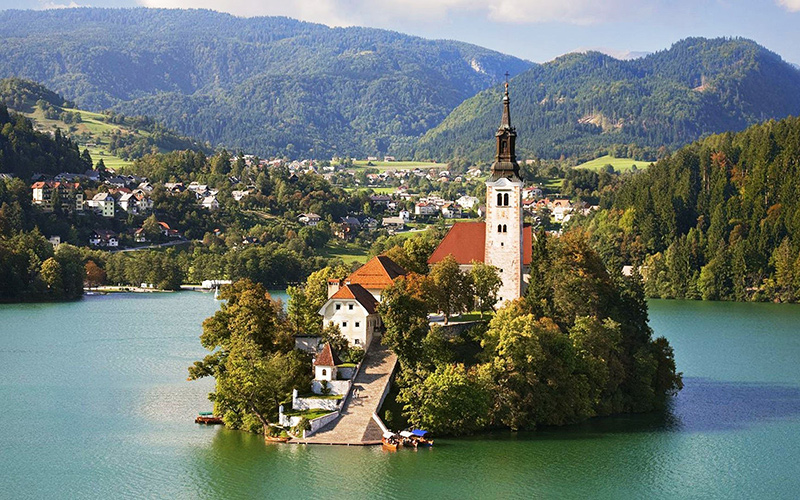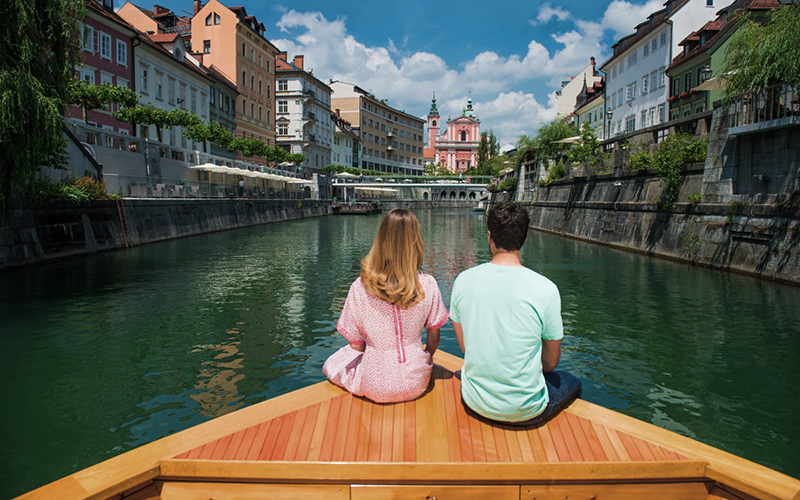12 Sep Slovenia
Situated in southern Central Europe, Slovenia borders Italy to the west, Austria to the north, Croatia to the south and southeast, and Hungary to the northeast. The north of the country is dominated by the Alps, while in the southwest, the Karst Plateau is a region filled with limestone caves and gorges. Slovenia has a coastline of 46.6 km by the Adriatic Sea between Italy and Croatia. An earthly paradise of snow-capped peaks, turquoise-green rivers and Venetian-style coastline, Slovenia enriches its natural treasures with mountains, ski resorts and lakes. If you don’t already know that Lake Bled is the most popular tourist attraction in Slovenia you’ll know it the moment you arrive. On Lake Bled, a glacial lake fed by hot springs, the town of Bled contains a church-topped islet and a cliffside medieval castle. Slovenia’s capital and largest city Ljubljana also happens to be one of Europe’s greenest and most liveable capitals. Ljubljana, is a perfect example of this blend of German, Mediterranean, and Slovenian culture. The old town is a blend of Baroque, Renaissance, and Art Nouveau buildings, watched over by a medieval castle. Ljubljana is a vibrant centre of creativity where cultural activity has become a way of life. It boasts one of the world’s oldest philharmonics. Each year it host more than 10,000 cultural events, from prestigious music, theatre and art events to those pertaining to alternative and avant-garde culture. Maribor is a Slovenian city set amid wine-region hills on the Drava River. On Glavni Trg, the old town’s main square, the Renaissance-style Town Hall dates from 1515. On nearby Grajski Trg square, 15th-century Maribor Castle houses a frescoed Knights’ Hall and the Regional Museum of Maribor, with extensive displays of regional artifacts. To the southwest, Maribor Pohorje is a prominent ski resort.
Taxes subject to change. Prices are subject to availability at the time of booking. Other conditions apply. Please ask for more details.



